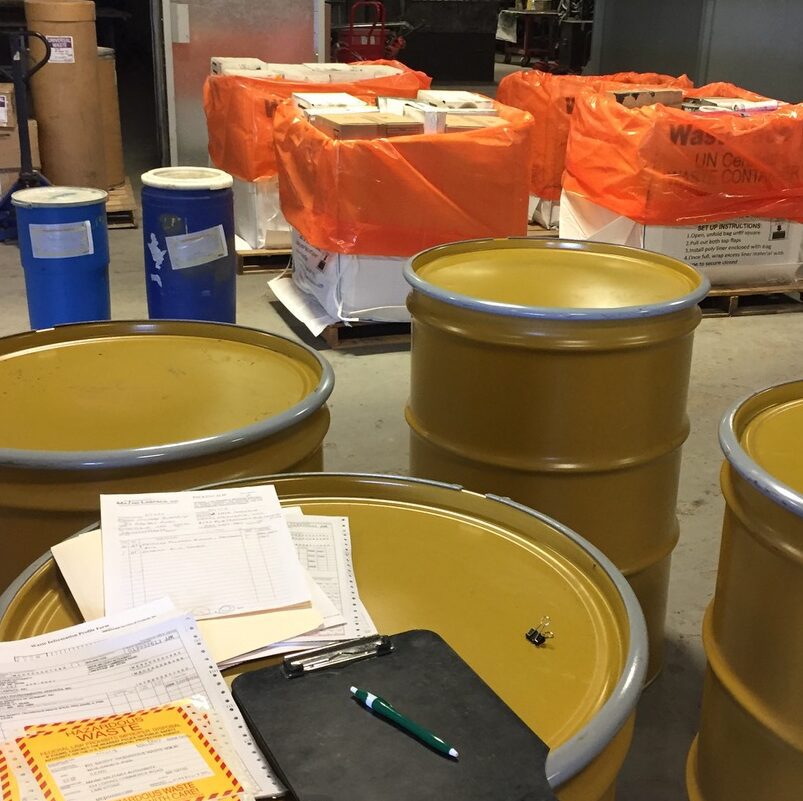
Toxic waste management violations are not only dangerous to workers who handle waste, but can also impact the well-being of your company. Regular inspections are common for companies that handle hazardous waste, so staying up to date on regulations is essential to avoid fines and other problems associated with violations. We’ve put together a list of the six most common waste violations…plus, how to resolve them!
1. Missing or Improper Labeling
Hazardous waste comes in many shapes and forms. With so many different sources, making sure that your materials are properly labeled according to local and federal regulations is important to environmental protection, as well as the protection of those handling hazardous waste. Failing to properly label containers used to store waste will inevitably lead to issues down the road, so to avoid problems be sure to follow EPA requirements including appropriate packaging, marking, waste determinations, class identification, training, and emergency response information.
2. Incorrect Waste Disposal
Disposing of hazardous waste incorrectly, such as dumping it in a municipal waste dumpster or pouring it down the drain, is extremely dangerous to the environment. It also breaks EPA compliance, which will run your company a heavy fine and possibly other penalties. Make sure that you are always following the appropriate protocol when it comes to hazardous waste removal and disposal, even if that means reaching out to a professional who understands regulations.
3. Not Identifying Hazardous Waste Determinations
When companies fail to appropriately identify the hazardous waste streams they generate, fines are almost a guarantee, not to mention environmental danger. Hazardous waste determinations are crucial in proper management. The four characteristics of waste determinations are corrosivity, reactivity, ignitability and toxicity, each requiring unique handling and storage.
4. Lack of a Contingency Plan
Having a safety or contingency plan plays a large part in minimizing hazards due to accidents such as explosions, fires, or spills. Having steps in place to act on in case of an emergency, including who the appropriate team members are to physically handle the waste or who is in charge of notifying proper authorities, keep you safe and protect your company from violating any laws.
5. Not Training Employees in Hazardous Waste Management
Training is one of the most important factors in safe hazardous waste management. Without properly trained employees, safety is on the line. All employees that will be handling waste directly – and even those who have minimal exposure – should be fully trained in proper storage, disposal and handling.
6. Too Few Waste Storage Area Inspections
Companies that generate hazardous waste must perform at LEAST weekly inspections of any storage areas containing waste. If you’re unable to easily navigate a hazardous waste storage area, have containers without lids or that are unlatched, or leakage, you are in violation of hazardous waste regulations and can be fined. Taking stringent care to maintain hazardous waste containers and storage areas is a very easy way to stay in compliance.
Contact the Experts at MLI Environmental
MLI Environment provides reliable hazardous waste disposal and management services in the New England area. As the needs of customers continued to develop over the years, we have become a leader in both domestic and international certified dangerous goods shipping in addition to hazardous waste services. If you’re interested in our services or have questions about toxic waste management, please request a quote today.
